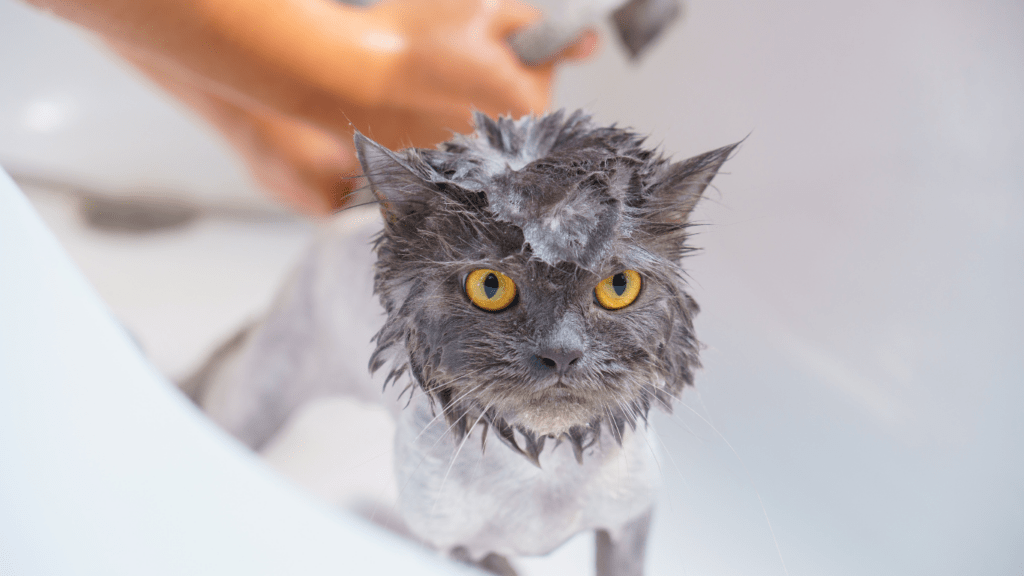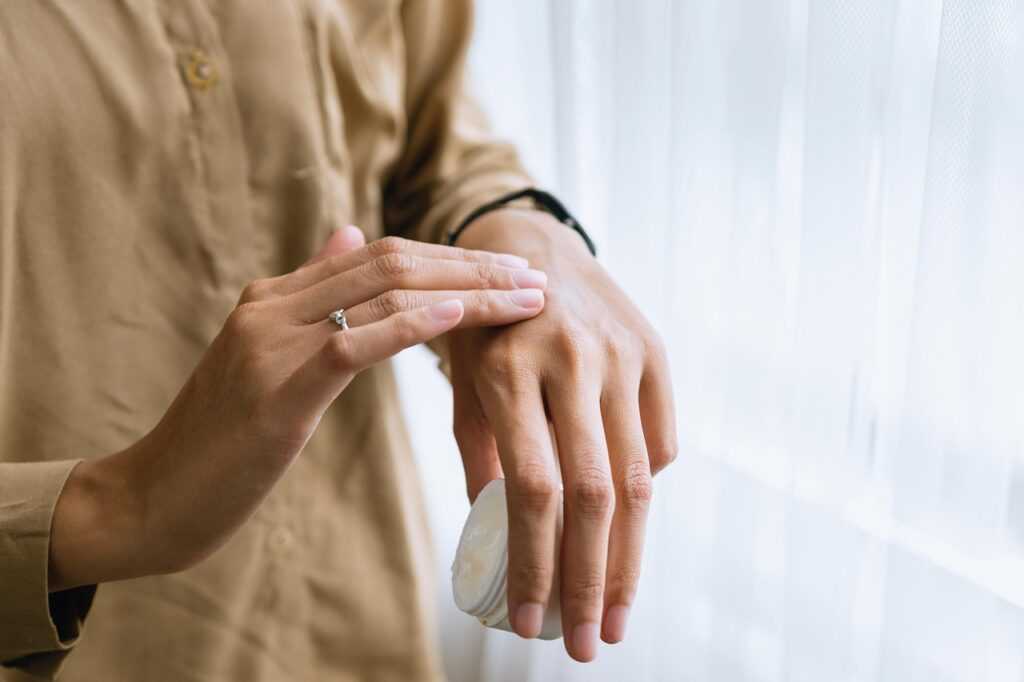Choosing the Right Shampoo and Bath Products
Selecting the best shampoo and bath products ensures your pet’s bath is safe and effective.
Assessing Your Pet’s Skin and Coat Type
Assess your pet’s skin and coat type before picking products. Pets have diverse skin types and coat textures that require specific treatments.
For instance, dogs with dry skin need moisturizing shampoos while those with oily coats benefit from degreasing formulas. Cats with long fur might need detangling shampoos. Identify your pet’s unique needs to avoid skin irritation and enhance coat health.
Understanding Ingredient Safety for Pets
Check the ingredients in pet shampoos to ensure safety. Harmful substances can cause allergies or skin conditions. Avoid products with parabens, sulfates, or artificial fragrances as they can irritate skin.
Opt for shampoos with natural ingredients like oatmeal or aloe vera which soothe and nourish. Verify with your vet if uncertain about a product’s safety.
Preparing Your Bath Space
Ensuring an appropriate bath space for your pet is crucial for a safe and enjoyable experience.
Gathering Necessary Tools and Supplies
Collecting essential tools and supplies beforehand streamlines the bathing process.
- Pet Shampoo: Choose one suitable for your pet’s skin and coat type, avoiding harmful ingredients.
- Brush: Detangle fur and remove loose hairs before the bath.
- Towels: Have at least two towels handy—one for drying and one for the floor.
- Non-slip Mat: Place a mat inside the tub or sink to prevent slipping.
- Cup or Spray Nozzle: Use a cup or detachable spray nozzle for rinsing.
- Treats: Keep a few treats nearby to reward good behavior and reduce stress.
Creating a Safe and Comfortable Environment
Setting up the bath area properly enhances safety and comfort for your pet.
- Temperature: Ensure the water is lukewarm, around 100°F (38°C).
- Space: Use a tub, sink, or large basin to accommodate your pet comfortably.
- Lighting: Ensure the area is well-lit to see clearly while bathing.
- Noise: Minimize noise to keep your pet calm, avoiding loud appliances or music.
- Restraints: Use a leash or harness if necessary to keep your pet secure.
- Accessibility: Arrange all supplies within easy reach to avoid leaving your pet unattended.
By preparing your bath space with these tips, both you and your pet can enjoy a stress-free bathing experience.
Bathing Techniques for Different Types of Pets

Different pets require specific bathing techniques depending on their type and temperament. These tailored approaches ensure a safe, stress-free experience for both you and your pet.
Tips for Bathing Dogs
Most dogs enjoy water, but it’s important to follow certain steps to ensure safety.
- Brush the Coat: Before bathing, brush your dog’s coat to remove tangles and loose fur. This prevents matting and makes shampooing easier.
- Use Lukewarm Water: Fill the tub with lukewarm water. Hot or cold water can cause discomfort or stress.
- Apply Shampoo Evenly: Use a pet-specific shampoo. Avoid the eyes and ears while shampooing.
- Rinse Thoroughly: Ensure all shampoo residue is rinsed out completely to avoid skin irritation.
- Dry Properly: Towel-dry the coat, then use a blow dryer on a low-heat setting if needed.
Tips for Bathing Cats
Cats are generally not fond of water, so a gentle and calm approach is essential.
- Trim Nails First: Trim your cat’s nails before bathing to prevent scratches.
- Prepare All Tools in Advance: Have everything ready before starting, including shampoo, towels, and a cup for rinsing.
- Use Minimal Water: Fill the sink or tub with just a few inches of lukewarm water.
- Gently Wet Fur: Use a cup or gentle spray nozzle to wet the fur, avoiding the head.
- Massage in Shampoo: Apply shampoo gently and massage it in, avoiding the face area.
- Rinse Well: Rinse thoroughly but gently, ensuring no shampoo remains.
- Dry Gently: Towel-dry your cat, and use a blow dryer on a low setting if your cat tolerates it.
Handling Nervous or Fearful Pets
Nervous or fearful pets require extra care to make the experience manageable.
- Stay Calm: Maintain a calm demeanor. Pets can sense your anxiety, which may worsen their fear.
- Use Treats: Utilize treats to create positive associations with bath time.
- Go Slowly: Introduce water gradually. Let them get used to each step before proceeding.
- Seek Assistance: Have another person help if needed, especially for larger pets.
- Consider Professional Help: If the pet remains fearful, consult a professional groomer or vet for advice.
By using these tailored techniques, you can ensure a more positive and safer bathing experience for your pet.
Drying and Post-Bath Care
Thorough drying and proper post-bath care ensure your pet stays comfortable and healthy. Paying attention to these steps can prevent issues like skin infections.
Effective Drying Techniques
Pat dry with a towel to remove excess water. Focus on high-moisture areas like the belly and underarms. Don’t rub vigorously, as this can cause tangles and skin irritation. Use a pet-safe dryer on a low, warm setting to complete drying. Keep the dryer moving constantly to avoid overheating any spot. For cats, skip the dryer if they’re too anxious; towel drying alone is usually sufficient.
Post-Bath Grooming Essentials
Brush coat after drying to remove any remaining loose fur and prevent matting. For breeds with longer hair, consider a de-matting comb or slicker brush.
Check ears for moisture and use a pet-safe ear cleaner if needed to prevent infections. Inspect paws and trim nails if required. Finally, reward your pet with treats or affection to positively reinforce the bathing experience.
Common Mistakes to Avoid When Bathing Your Pet
Every pet needs regular baths, but some errors can make the experience unpleasant or harmful. Awareness of these common mistakes ensures a safe and enjoyable bath time for both you and your pet.
Overbathing and Its Risks
Overbathing a pet strips natural oils from the skin, leading to dryness and irritation. Dogs benefit from baths every 4-6 weeks, while cats need them less frequently, about every few months.
Frequent baths weaken the skin’s barrier, making pets prone to infections and allergies. Consult your vet about a suitable bathing schedule based on your pet’s breed and health condition.
Ignoring Signs of Stress and Discomfort
Pets communicate stress through body language. Ignoring signs like trembling, whining, or attempting to escape causes trauma, making future baths more difficult.
Stop the bath immediately if your pet shows significant distress, then use treats and soothing tones to calm them. Gradually reintroduce your pet to water in subsequent sessions if they show stress in response to baths.


